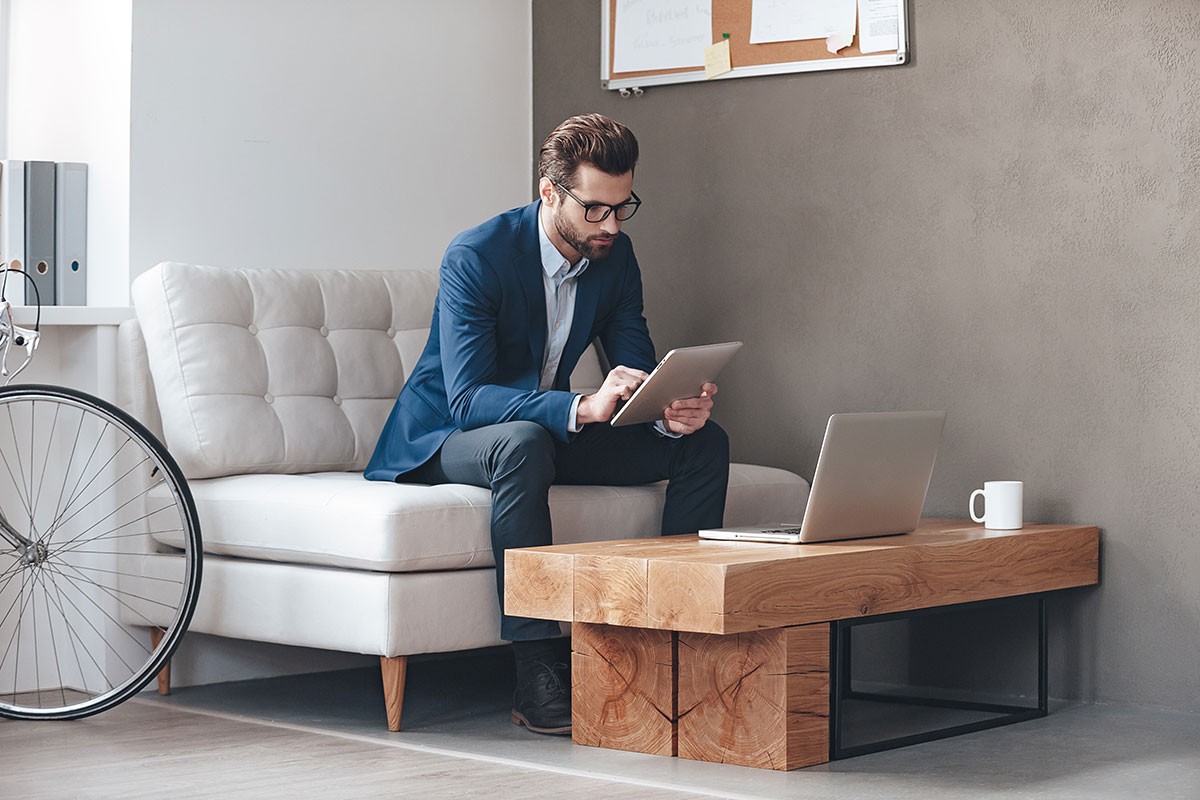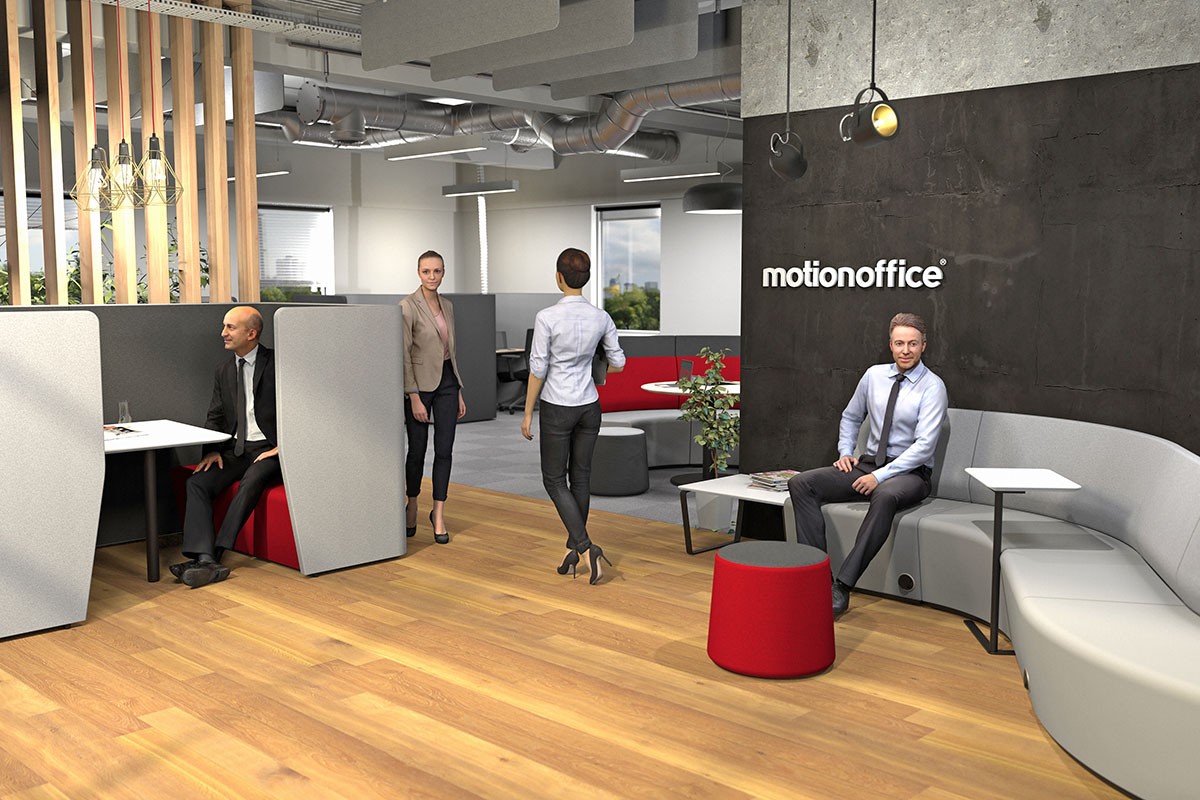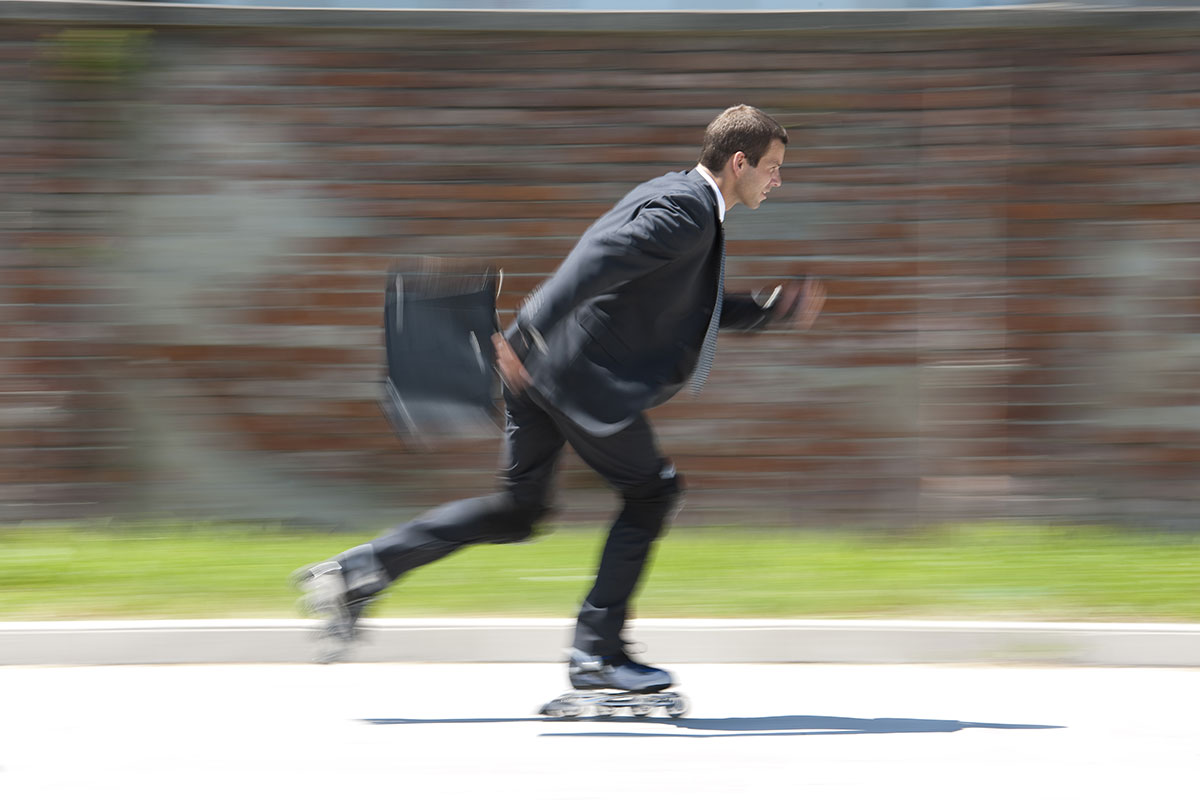Mobile devices have freed office workers from being desk bound and led to a new way of working: Activity Based Working or ABW. As more and more companies make the shift to ABW workspaces, the evidence is clear that a more flexible style of working benefits both employees and employers, saving time and increasing productivity. Now, with the comprehensive MotionOffice range of furnishings, implementing ABW is easier and more affordable.
A global survey of over 12,000 office workers in 17 countries was released recently by global office furniture giant Steelcase. Designed to measure the connection between employee engagement and workplace satisfaction, the survey results revealed the sad fact that 11 per cent of employees were highly dissatisfied with their offices and also highly disengaged (ie bored, unhappy and possibly even severely depressed).
On the other hand, just 13 per cent of global workers reported being highly satisfied with their workplace and highly engaged (ie happy, thriving and loving their jobs).
The importance of control over where and how we work

What is the key factor linking all these happy, thriving workers? They reported having a greater degree of control over where and how they work, including access to privacy when they need it. According to the report, Engagement and the Global Workplace, "They are empowered, both by organisational decisions and the spaces made available to them within their workplace, to make choices about where and how they work. This means they can manage their need for privacy so they can concentrate easily and work with teams without disruption.
"This finding suggests that a key design principle for the workplace is to create a range of spaces – for groups and individuals, mobile and resident workers – and corresponding work policies that enable employees to make choices about the best way to work."
In other words, the happy, thriving, productive workers were empowered by a concept in workplace design known as Activity Based Working (ABW).
A place for every task
ABW was enabled by the rise of mobile devices. With no need to sit at one desk all day in front of a fixed PC, new ways of working were suddenly possible. Office workers could be freed from their private cubicles and corner offices to work across the office in different zones designed for focussed work, collaborative work, presentations and training and casual interaction.
The concept of ABW was first developed and made widespread by Dutch consulting firm Veldhoen + Company. The first ABW workspace, in 1997, was the head office of Interpolis, a Dutch insurance company.
The concept was quickly adopted by the financial sector, followed by businesses in the property sector. Today, many professional services, communications and technology companies, even legal firms are developing, testing or have already implemented versions of ABW.
ABW is constantly evolving as new technologies and work practices emerge, leaders learn from one another, and companies continue to shape the core concept to their own specific needs and company culture.
Working smarter, not harder
Canberra-based time-management consultant Johanna Jansen may well be the woman with the lowest chaos and stress tolerance you'll ever come across. Every day, she wakes up to make her life a little less complicated than it was yesterday. Johanna values space over stuff. She creates time to do nothing. She has a handful of lists so there is nothing on her mind. Her inbox is zero once daily.
In her blog, Time Mine, Jansen shares her ideas about time and work and how to work smarter, not harder. Unsurprisingly, she is a strong advocate for Activity Based Working.
As Johanna explains, "Activity Based Working is a concept to design your office in such a way that it supports work activities optimally, rather than drawing a boundary around its users' personal spaces. In practice, it means that an ABW space fosters a variety of office environments, that are all supporting different activities, performed by its residents in their work.
"In an average ABW office, that would be a mix of team desks, quiet concentration rooms, telephone booths and a meeting room. More advanced ABW offices may also offer stand up meeting tables, a brainstorm area, multimedia rooms, a lounge area and stand up working stations. All ABW spaces should have a fast wireless network. In all, facilities are shared between coworkers and management, no one has their own desk, except maybe security staff."
Each day is filled with many tasks we each need to do, but the attention required for each task is not uniform. Some tasks require us to think creatively, for others we need to collaborate, and others are simply mundane daily chores. In an ABW workspace, each person can choose a desk, room or area according to the task at hand.
A well-designed ABW workspace is designed to support each individual in doing their particular tasks.
How Activity Based Working benefits employees
With Activity Based Working you:
- Concentrate better
- Are more productive
- Are more active and less sedentary during the work day, allowing higher energy levels
- Are more likely to collaborate and share ideas and skills with others
- Are more mindful of your tasks, activities and productivity
- Enjoy working more
"In a more traditional office you're always distracted at least a bit all the things you could do at your desk," says Jansen. "So you cannot focus fully on a single task. And people are most productive when they are focussed on a single or support task. By working activity based, you condition your mind and body to get the most out of time and space and, the good thing is, you get better at it every day.
"Start to think about your tasks in terms of 'How can I best perform this task?' and 'What environment that I have access to best supports me in doing that?' You can choose to sit in a quiet library doing concentration work, or invite others for a coffee and a chat about your project in a nearby cafe, make your phone calls standing up (you'll make them briefer) or organise a stand up meeting."
Ultimately, if you are able to choose the space that best suits the project at hand, you are also more likely to complete it more quickly. In other words, you can work less and achieve more.
Rethinking the workspace

Implementing ABW in the workspace, however, requires a complete rethink and specialised flexible furnishings designed specifically for ABW applications. This is where MotionOffice comes in – a comprehensive range of well-designed and attractive office furnishings specifically designed to easily and affordably create personalised arrangements for an individual company's specific needs, according to the tasks their employees need to undertake on a daily basis.
In her book, Create a Thriving Workspace, Melbourne-based workplace design specialist Anetta Pizag, says that the best Activity Based Workplaces are dynamic environments geared towards teamwork, with collaborative spaces taking up over 30 per cent of the floor area (while in traditional offices this is typically around 10 per cent).
"This is achieved within the same, or smaller, floor spaces since with non-assigned seating the space is used more efficiently," says Pizag. "Activity based workspaces typically offer five to 10 different types of work settings for individual as well as team activities. These spaces are designed to help people excel in each activity, whether it's generating ideas, solving problems, executing plans or sharing knowledge.
"ABW is a potent strategy. If implemented well, the benefits are enormous. It creates a less hierarchical workplace that stimulates interaction and knowledge exchange, supports learning and professional development, promotes trust and personal accountability, and makes work more efficient as well as more enjoyable."
Selecting the right furniture is essential
UK office design firm Morgan Lovell advises that "furniture plays a huge role in Activity Based Working. So it's important you give staff spaces that help them work flexibly". In its Activity Based Working Checklist, Morgan Lovell advises:
- Make sure the desks and chairs are robust as they will be well used.
- Think about the type of soft seating needed that will encourage people to sit down and work together. Meeting tables with an integrated screen are great when small groups need to collaborate but don't want the formality of a large meeting room.
- Think about different solutions to create privacy, such as high-backed sofas that create a private meeting space without the need for a separate room.
- Think about movable furniture that meets different needs, such as for small meetings, phone calls or casual conversations.
- Select furniture with integrated power. As people will be wandering around with laptops and other mobile devices, provide plenty of sockets so they can power up.
- Tables to spread out papers are often overlooked, but very popular with staff.
All this and more is incorporated in the MobileOffice range, with an important added benefit. The major complaint for office workers in open plan offices is distraction from noise. MobileOffice acoustic panels are Acoustic Certification Tested to absorb 76 per cent of sound waves, dramatically reducing 'noise bleed' in open plan environments.
So with ABW and MotionOffice it is indeed possible to work less and achieve more, with a greater degree of work satisfaction in the process.





